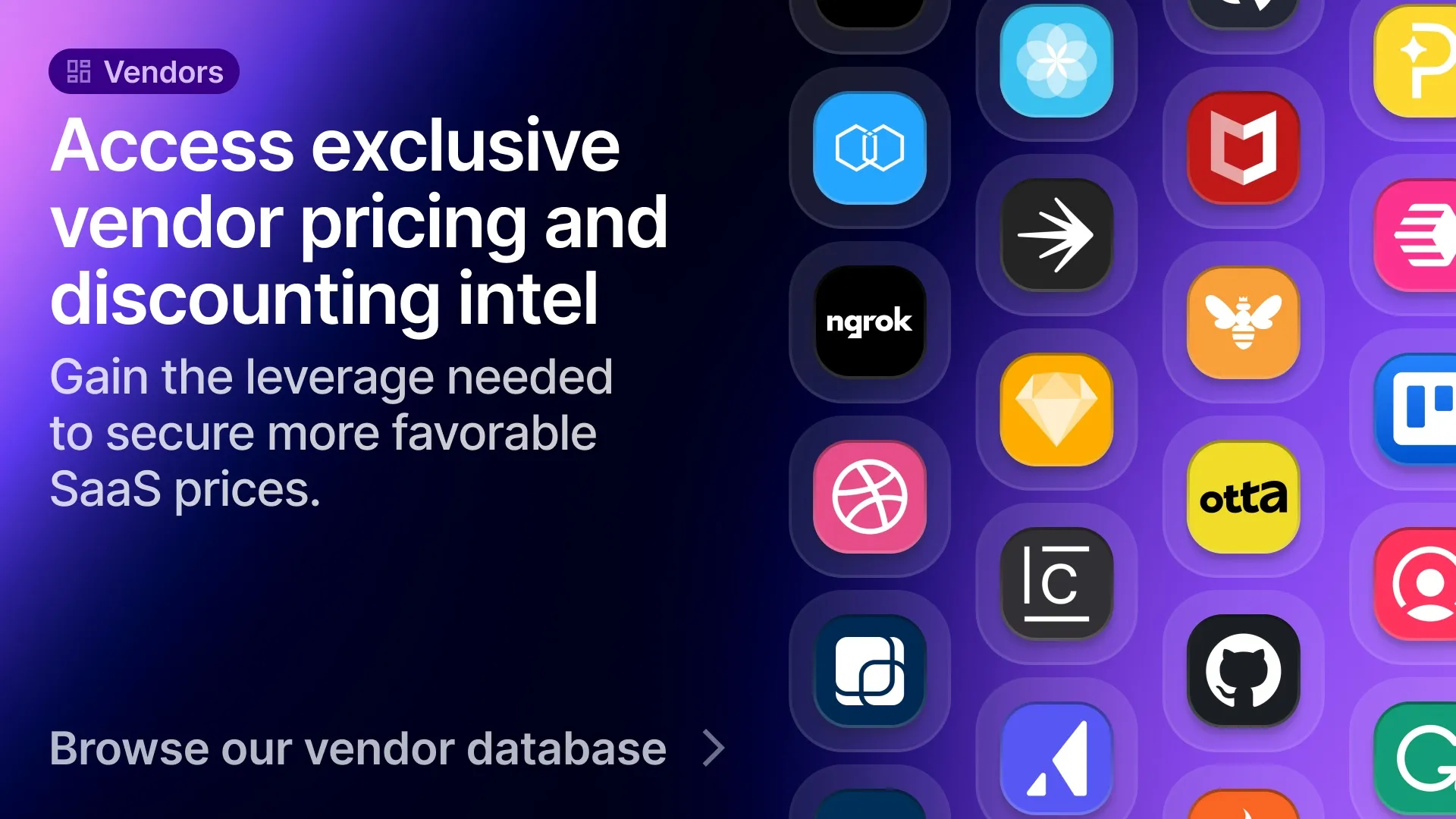



Take a self-guided tour of the platform.
See why Vertice is trusted by top procurement leaders.



With annual revenue exceeding $2 billion, a global customer base of more than 11,000 companies, and a 19% market share, Snowflake is certainly a vendor worth considering if you’re looking to move your data to the cloud or migrate to a new platform.The question is, how much will it cost you?In this article, we’ve not only looked at the different factors influencing the cost of using Snowflake, but we’ve also detailed how you can secure the best possible discount.With that in mind, here’s everything you need to know about Snowflake’s pricing model.,
How much does Snowflake cost?
Given the complex nature of Snowflake’s offering, it should come as no surprise that the company doesn’t offer a one-size-fits-all pricing model. Instead, the cost comes down to the user’s region and their preferred platform, whether that be AWS, Microsoft Azure or Google Cloud Platform.So, how much can you expect to pay?To answer this, we need to understand what the pricing actually consists of and how it’s calculated.,
Understanding Snowflake’s pricing model
According to Snowflake, its architecture separates data warehousing into three layers: storage, virtual warehouses (compute) and cloud services. The price you will be charged for using the platform will ultimately depend on your actual usage of each layer. There’s no set monthly fee and you won’t end up paying for features that you don’t use – a sneaky pricing tactic used by many other SaaS vendors.Instead, you will incur a monthly cost for the data you store. This is calculated using the average amount used per month, after compression, and can be pre-purchased or paid for on-demand.To pay for the virtual warehouses (compute) and cloud services, however, you’ll need Snowflake credits – a unit of measure essentially used as a form of currency.But how much does a Snowflake credit cost?According to the company’s list pricing, the cost per credit can be as low as $2 for users in the US on a standard plan, or as high as $5.40 per credit for those in the UK (based on a Business Critical, Enterprise + plan). The choice of platform doesn’t appear to influence the cost of a credit.What it does determine, however, is the monthly storage cost, which starts from $20 per TB, per month for capacity storage (paid for upfront), or $35 per TB, per month for on-demand storage, paid for on a monthly basis.Again, these more favorable rates are for the Google Cloud Platform in the US. In contrast, those using AWS in South America can expect to pay $40.50 per TB for capacity storage, or $74 per TB for on-demand storage.For a better understanding of how Snowflake’s pricing, and more specifically its credits work, we’d recommend reading the company’s dedicated pricing guide.,
Snowflake plan types
,

It’s not just the region and platform that the cost per credit is determined by, it’s also your chosen plan type – Standard, Enterprise, Business Critical or Virtual Private Snowflake (VPS), the latter of which is only available in certain regions.,
How much can you expect to pay in total?
While we’ve looked at how the cost of a Snowflake credit and the cost of a terabyte of storage is determined, the actual amount of credits and storage you’ll use will also depend on a range of factors.Factors such as:
- Data load frequency
- Loading window
- Number of users
- Time slot
- Warehouse
- Data set size
Based on the two pricing examples shared by Snowflake, the annual cost could easily range from close to $23,000, up to $118,807.A pricing example shared in this article, however, shows that the cost could easily reach $500,000 for larger enterprises.In fact, this isn’t far off what one customer claims to be spending each year.,

, , , ,
Can I get a discount on Snowflake pricing?
In short, yes.Snowflake itself does in fact state that discounts are available for capacity purchases. In other words, when credits are pre-purchased to be drawn down over the duration of the contract.But what sort of discount could you be looking at?While it’s not clear exactly how much of a discount Snowflake will offer you by pre-purchasing credits, it does indicate a ‘5% sample discount’ when providing an example of the total annual cost for a hypothetical plan.Here’s the thing though – with the right leverage, you stand to secure a far greater saving than 5%.Not only does our data show that vendors in the data warehousing sector offer average discounts of 18% (closer to 32% as contracts increase), but Snowflake itself has a low pricing parity rating – indicating that pricing isn’t consistent across similar customer profiles – as well as a medium discount possibility.Want to know exactly how much you could stand to save on your Snowflake renewal or purchase? Take a look at our dedicated pricing page for the vendor, or alternatively contact our team here.,
How to gain the leverage needed to secure the best possible discount
So, if it’s possible to get a better discount on Snowflake’s pricing with leverage, the question is how?How exactly do you gain this leverage?In short, by finding out what other companies are actually paying.With access to the pricing and discounting data for thousands of global software companies, including but certainly not limited to Snowflake, Vertice can access this data and use it to secure the best possible deal on your purchase or renewal.Our expert team of SaaS buyers will then draw on years of experience, using this data to secure you the very best price and terms on any of your contracts.Find out more about the financial and time-saving benefits of working with a SaaS procurement partner, or alternatively request a free analysis of your software stack to get an idea of how much you could be saving on your annual SaaS spend.,

, , , , , , , , , , , , , , , , , , , , , , , , , , , , , , , , , , ,
.webp)
















